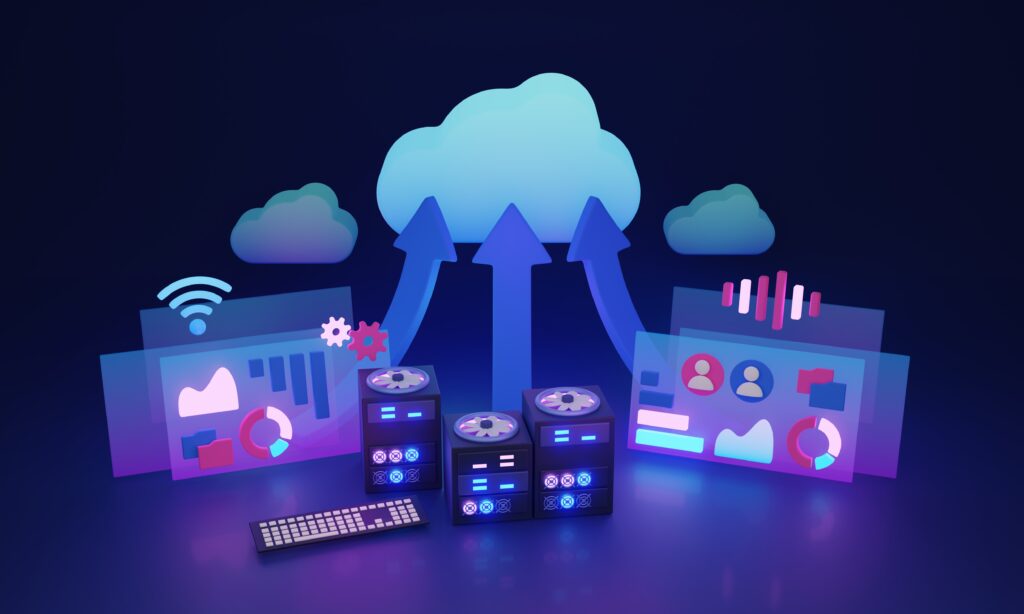You are on the cusp of a new era in cloud computing. Serverless architectures offer businesses infinite scalability and millisecond billing – only paying for the exact resources used. As you read on, immerse yourself in this innovative technology shaping the future of software development. Learn how serverless computing eliminates the need to manage servers, optimizing agility while slashing costs. Discover how leading companies leverage serverless to rapidly build and deploy applications, responding faster to changing business needs. The benefits abound, from increased productivity to reduced operational overhead. Now is the time to gain a competitive edge with serverless. The potential is limitless when serverless untethers you from servers. Master this revolutionary approach to unlock innovation and transform your business.
What Are Serverless Architectures?
Flexible and Scalable
Serverless architectures allow you to build and run applications and services without managing infrastructure. They provide a platform to upload your code, which is executed in a fully managed environment. This lets you focus on your applications and services rather than working and operating servers.
Event-Driven
Serverless architectures are event-driven, meaning that your code is invoked in response to events. These events include direct API requests, file uploads, scheduled events (cron), database changes, IoT sensor data, and more. Your code is automatically scaled up and down in response to the incoming event load. This makes serverless architectures well-suited for use cases like web apps, mobile back-ends, IoT services, and other event-driven applications.
Reduced Costs
With serverless architectures, you only pay for your code’s compute time and resources. You are charged based on the number of requests and the duration your functions execute. When your code is not running, you don’t pay anything. This can significantly reduce costs compared to provisioning and paying for idle servers. Serverless also reduces operational costs since the cloud provider operates the infrastructure.
Serverless architectures provide many benefits for building scalable applications and services in the cloud. By offloading infrastructure management to the cloud provider, you can focus on your code and build event-driven, flexible applications that scale automatically based on demand. The pay-per-use model also reduces costs by avoiding charges for idle infrastructure capacity. For many use cases, serverless architectures are the future of cloud computing.
The Benefits of Serverless Architectures for Scalability
Serverless architectures provide businesses with a scalable, cost-effective approach to cloud computing.
Flexibility and Agility
- Serverless architectures are flexible and agile. Resources are allocated dynamically based on demand, so you only pay for the resources you use. This allows businesses to scale automatically based on usage without provisioning servers beforehand.
Cost Savings
- With serverless architectures, you only pay for the resources you use. This can significantly reduce costs compared to always-on servers, and businesses save money by not having to pay for idle resources.
Focus on Code
- Serverless architectures allow developers to focus on writing code without managing infrastructure. The cloud provider handles server management so developers can concentrate on building applications and solutions.
Rapid Prototyping and Innovation
- The flexibility and low cost of serverless architectures enable rapid prototyping and experimentation. New ideas can be built and tested quickly without a large upfront investment in infrastructure. This speeds up innovation.
- Serverless architectures provide scalability, cost savings, and accelerated development. By leveraging the power of the cloud, businesses can focus on innovation rather than infrastructure management. Serverless computing’s flexibility and agility make it an ideal solution for many modern applications and workloads.
How Serverless Architecture Provides a Cost-Effective Approach to Cloud Computing
1. Pay-as-You-Go Pricing
Serverless architecture operates on a pay-as-you-go pricing model, meaning you only pay for the resources you consume. You are charged based on the number of requests served and the duration of your functions. This allows businesses to avoid the costs of idle servers and only pay for what they use. As your application scales up or down, your costs scale linearly with demand. This can result in significant cost savings compared to provisioning and maintaining servers.
2. No Server Management
With serverless architecture, you do not have to provision or manage servers. The cloud provider handles server-related responsibilities like provisioning, scaling, patching, and more. This allows developers to focus on building applications and business logic rather than managing infrastructure. The time and money saved on server management can be reallocated to improving applications and the customer experience.
3. Automatic Scalability
Serverless architecture is inherently scalable. As demand increases, the cloud provider automatically allocates more resources and computing power to handle the additional load. When demand decreases, resources are deallocated to minimize costs. This automatic scaling means you do not have to worry about managing traffic spikes or lulls in demand. Your applications will automatically scale to match usage levels so you can deliver consistent performance to your customers.
4. Increased Agility
The serverless model provides increased agility for development teams. Without the responsibility of managing servers, new code can be deployed faster. Resources can be provisioned in seconds, allowing teams to rapidly experiment, iterate, and improve applications. The pay-as-you-go pricing and automatic scalability also provide flexibility to pivot based on changes in demand or new opportunities. This speed and flexibility can help businesses gain a competitive advantage by bringing new products and features to market faster.
- In summary, serverless architecture offers many benefits over traditional cloud computing models. The combination of pay-as-you-go pricing, no server management, automatic scalability, and increased agility provides businesses with a cost-effective and flexible approach to building and deploying cloud-based applications. By leveraging serverless, organizations can reduce costs, increase innovation, and better meet their customers’ needs.
Use Cases and Examples of Serverless Architectures

Serverless architectures have a wide range of business use cases. Data Processing Serverless functions are ideal for processing data in real-time. For example, you can use them to filter, aggregate, and manipulate data as soon as it is produced. This allows businesses to gain insights and take action based on live data instantly.
IoT Backends
Serverless architectures work well for IoT backends that handle events from connected devices. For instance, you can have a function trigger when a sensor detects motion to turn on a smart light. Or have a function send an alert if a device experiences an error. The scalability and event-driven nature of serverless makes it an excellent fit for IoT.
Web Applications
Serverless architectures can power entire web applications or just parts of them. For example, you may have serverless functions that handle user authentication, send emails, resize images, or trigger based on a database event. This allows you to focus on your application logic rather than infrastructure management.
Chatbots
Serverless architectures are helpful in developing chatbots and voice assistants. For example, you can have functions that detect intent and entities in user messages, query knowledge bases for responses, and return a response. The serverless model allows chatbots to scale to handle vast volumes of conversations.
Stream Processing
- Serverless functions can be used to process data streams in real time. For example, you may have a function that analyses a live video stream to detect objects, faces, or inappropriate content. Or a function that identifies trends in a social media data stream. The serverless model provides a scalable and cost-efficient solution for stream processing.
In summary, serverless architectures enable highly scalable data and event processing solutions, IoT, web applications, chatbots, and stream processing. The use cases are diverse, but in each one, serverless allows businesses to build and scale applications without managing servers.
Serverless Architectures: The Future of Scalable Cloud Solutions FAQ
1. What are serverless architectures?
- Serverless architectures are cloud computing models in which the cloud provider dynamically allocates machine resources to execute server-side code as and when needed. This allows you to build and run applications without managing servers or infrastructure. You focus on your code, and the cloud provider handles the rest.
2. How do serverless architectures work?
- With serverless architectures, your code is executed in stateless compute containers that are event-driven and ephemeral. The cloud provider automatically allocates resources to execute your code in response to events and then deallocates them once the execution is complete. You are charged only for the compute time used during execution. This allows for highly flexible scaling and high efficiency.
3. What are the benefits of serverless architectures?
Serverless architectures provide several key benefits:-
Reduced operational costs
- You only pay for the compute resources used during execution. There is no charge when the code is idle.
Automated scaling
- Resources scale automatically based on demand. There is no need to provision or manage servers.
Increased agility
- Faster development as you focus on code, not infrastructure. Quickly iterate and deploy new features.
Higher availability
- Serverless architectures are distributed, event-driven, and run on managed infrastructure, so they are less prone to downtime.
Increased security
- Serverless providers maintain the underlying infrastructure and keep platforms patched and updated.
4. What are some examples of serverless architectures?
Famous examples of serverless architectures and services include:
AWS Lambda – Run code in response to events without provisioning servers.
Azure Functions – Execute code snippets in a serverless environment.
Google Cloud Functions – Create single-purpose, stand-alone functions that respond to events.
Twilio Functions – Build serverless functions to customize and extend Twilio APIs.
Serverless architectures powered by functions as a service (FaaS) solutions like these reshape cloud computing and the future of scalable solutions. For many use cases, serverless is the new default.
What’s The Verdict?
With serverless architectures offering immense benefits, the future looks bright. As you have seen, serverless provides automatic scaling, high availability, and pay-per-use billing – enabling you to focus on code, not infrastructure. While challenges around monitoring and debugging remain, the continued innovation in this space is helping to mature these architectures rapidly and adopting a serverless approach where suitable allows you to take advantage of its scalability and cost-effectiveness. Careful planning helps ensure a smooth transition, but the effort is worth it. Serverless is redefining the cloud and empowering developers. The possibilities are endless, and the future is now yours to shape.
More Stories
KT Cloud Accelerates Digital Growth with New High-Tech Data Center in Yecheon-Gun
KT Cloud new data center in Yecheon-gun marks a key public-private effort with Gyeongsangbuk-do and Yecheon County.
Microsoft Cloud Momentum Fuels AI Growth Across Indonesia and Malaysia
Microsoft Cloud services expands strategically into Indonesia and Malaysia to reshape Southeast Asia’s technological landscape.
EastWest Bank Embraces Temenos SaaS to Propel Digital Transformation
EastWest Bank leads digital transformation in financial services through its new partnership with Temenos. The collaboration uses Temenos’ advanced Software-as-a-Service (SaaS) solution.
Confluent Unifies Real-Time and Historical Data to Power Next-Gen AI and Analytics
Confluent has made major progress by upgrading its Confluent Cloud platform. These enhancements aim to unify data streams for advanced AI applications.
AI Synergy: Exabeam and Vectra AI Forge Unified Front Against Evolving Cyber Threats
The alliance between Exabeam and Vectra AI marks a major cybersecurity advancement. This strategic partnership merges top-tier technologies from both companies to enhance defenses against complex cyberattacks.
ChatGPT Deep Research Now Integrates with Dropbox and Box for Enhanced Data Access
ChatGPT Deep Research integration with Dropbox and Box enhances data access for users enabling them to link cloud storage accounts directly to Deep Research.


